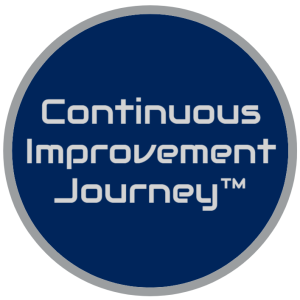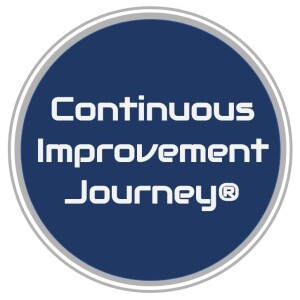Episodes

Wednesday Jun 14, 2023
E19: The Demise of Blockbuster and Kodak
Wednesday Jun 14, 2023
Wednesday Jun 14, 2023
What happens when an organization decides not to change and keeps the status quo? It is easy to look back on the history of organizations or products that have come and gone. The main trend we see is….if you don’t improve or change, you most likely will be forgotten.
There are many complicated reasons why some organization's fail and so there is one single reason why some organizations continue to be successful while others go by the wayside.
However, when we think back on organizations that have failed, we might take a lower-thought approach and think, why were they so stupid? Why did they not just change? Again, it is more complicated than that.
Let's explore companies like Blockbuster, Kodak, Blackberry phones, Sears and Robuck, and Kimberly-Clark.

Sunday Apr 02, 2023
E18: The 4 Levels of Leadership
Sunday Apr 02, 2023
Sunday Apr 02, 2023
When you look back on some of history's most influential and effective leaders, what made them so great? They were selfless, loved the people they were leading, and had a strong desire to empower those around them to become better people.
When you look back on some of the worst leaders from history, what made them so horrible? They are exact opposites of the great leaders, they were selfish, would do anything to maintain their power, and led through fear to suppress the people in their control.
Becoming a great leader or even a great person does not take eons of time. We can all start right now. Even if we are not a leader when we think in the context of a traditional leader or manager, we all have an influence on the lives of those around us through our leadership qualities, even if we do not realize it.
So, the question we should ask ourselves is, what kind of leader will I be?
Many people throughout history have become fixated on the idea of leadership. I believe that is because we have had some pretty horrible leaders and also pretty influential leaders throughout history. A few questions that some people may ask is, what makes them such a great leader? How can I become or be taught to become like one of the great leaders from history? And how can we avoid bringing into power leaders driven by ill intent?
As I have thought about these questions, I can’t help but think that there are multiple levels of leadership. What I have come to know is that there are 4 levels of leadership that I believe summarize the 4 categories that leaders could be placed in. Of course, there are probably other better categories, labels, or descriptions for leaders, but the 4 levels that I would like to talk about are dictator, manager, leader, and then servant leader.

Saturday Mar 11, 2023
E17 Layoff’s Path of Destruction
Saturday Mar 11, 2023
Saturday Mar 11, 2023
In the short term, layoffs seem logical and look great on paper, however, in the long term, these organizations will be trading short-term safety over long-term profitability.
There are all kinds of reasons why companies should and should not do layoffs, including strategies to avoid layoffs. We will talk about some strategies to avoid layoffs, but mainly, we will focus on the long-term damage that will fall on an organization if they believe layoffs are their only answer.
Very few CEOs have taken the less-traveled route when dealing with layoffs by stating very directly that they will not be participating in any layoffs. Why? Because layoffs produce a mirage that organizational leaders believe will resolve their short-term struggles. However, what results is a larger long-term destruction of the remaining employees and the rest of the organization.

Wednesday Feb 22, 2023
E16: The Power to Change Using Motivational Interviewing
Wednesday Feb 22, 2023
Wednesday Feb 22, 2023
Motivational interviewing helps tap into our intrinsic motivation to create the desire within ourselves to change. Typically when people are told or forced to do something, most likely, we will be met with resistance. So, instead of telling someone what to do, giving them information, providing a road map, directing, warning, instructing, or laying out a strategy for them to follow that you think will make them change. Motivational interviewing is the opposite of this traditional way of thinking in getting someone to change.
Motivational interviewing has its roots and is most commonly used in the medical industry. Helping someone with their body weight or helping someone kick off some type of additions has great success with motivational interviewing compared to other traditional medical treatments or processes. We will first provide a backstory on typical applications of remote viewing in the medical industry, and then we will reveal some ways to use motivational interviewing in the world of the continuous improvement industry.
Resource:
Australian Heart Foundation, 6 videos on motivational interviewing: https://www.youtube.com/playlist?list=PLwsK_djnleJU4RFkUTIwMZOlS4igWb-yF

Wednesday Feb 08, 2023
E15: Fear of Change is a Deceptive Belief
Wednesday Feb 08, 2023
Wednesday Feb 08, 2023
Resistance to change can be one of the most significant barriers that lean, six sigma, and continuous improvement come up against. The law of resistance to change could very well be the most challenging part of our path as we navigate along our continuous improvement journey.
A statement that we all have heard or have said ourselves is, “people don’t like change,” or “people fear change.” I used to believe this statement, but as I have matured a little over the years as a student to lean and continuous improvement. I have come to know for myself that this statement is utterly false, misleading, and inflicts a negative influence on people so that they won’t change.
What actually is true is that people and organizations will change when their reasoning and the resulting outcome or benefit of the change outweigh their current state of being.

Wednesday Jan 25, 2023
E14: Was Taiichi Ohno Wrong About Standard Work?
Wednesday Jan 25, 2023
Wednesday Jan 25, 2023
This week we will be discussing what standard work is, what it is not and how standard work will automatically help us increase the quality of our products and services. We will also have an arm wrestle about Taiichi Ohno’s quote when he said, “without standards, there can be no kaizen.” But what came first, the chicken or the egg? Does standardizing the process come first, and then improving the process follows, or is it the other way around, improve the process, then standardize it?
My hope is that the 11th and 12th law of the 13 Laws of System Optimization will help give us a larger and all-encompassing perspective to help take us to the next level from our traditional lean manufacturing training.

Wednesday Jan 18, 2023
E13: The Taguchi Loss Function and Total Costs
Wednesday Jan 18, 2023
Wednesday Jan 18, 2023
In manufacturing, we live or die on tolerances. The tradition in American and other Western countries is we are so focused on the specification limits, while Japanese companies focus on uniformity and reducing variation around the target value. In other words, Western countries make a part and say, is it within specification? Or it is right on the limit, so it passed our quality checks and therefore must be good. While the Japanese say, how can we always make parts consistently as close to the target value and with the least amount of variation possible?
To help get us away from this poor traditional thinking, we will learn about how the Taguchi Loss Function provides us a way to quantify the cost of not producing something on the target value. What Genichi Taguchi did was create the Taguchi loss function to help quantify and show that quality does not all of a sudden plummet when the part is just outside of the specification limits. What instead occurs is that quality losses exponentially increases as the measurement value deviates away from the target value.
My hope is that this series of the 13 laws of System Optimization will help give us a larger and all-encompassing perspective to help take us to the next level from our traditional lean manufacturing training.

Wednesday Jan 11, 2023
E12: Training Within Industry (TWI)
Wednesday Jan 11, 2023
Wednesday Jan 11, 2023
For this week’s episode of the Continuous Improvement Journey podcast, we will be talking about how the methodology of Training Within Industry was created during the 1940s as part of the World War II production effectiveness effort.
One of the great outcomes of Training Within Industry was it drastically cut down the time required for new workers to reach a certain competency level from the usual 6-12 months to less than 1 month.
There are three main parts to the original Training Within Industry methodology. The first is Job Instruction which is effectively training employees on the job using the EDGE Method of explaining, demonstrating, guiding, and enabling.
Second is Job Relations which is about effectively leading people and is great for manager and supervisor training.
Third is Job Methods which is focused around Methods for formalizing Continuous Improvement.
My hope is that this series of the 13 laws of system optimization will help give us a larger and all-encompassing perspective to help take us to the next level from our traditional lean manufacturing training.
Resources:
Training Within Industry Instruction Books from: The Bilas Group https://www.thebilasgroup.com/twi-learning-center/downloads/
Training Within Industry Institute: https://www.twi-institute.com/training-within-industry/training-and-certification/twi-programs/
Problems In Supervision Videos from 1944:
Problems in Supervision: Instructing the Worker on the Job
Problems in Supervision: Instructing the Blind Worker on the Job
Problems In Supervision: Introducing the New Worker To His Job
Problems in Supervision: A New Supervisor Takes a Look At His Job

Wednesday Jan 04, 2023
E11: The Law of Design for Manufacturing and Assembly (DFMA)
Wednesday Jan 04, 2023
Wednesday Jan 04, 2023
Have you ever had something that was made out of cheap plastic and broke easily or the design of something was so complicated that it was easier to throw it away and buy a whole new assembly to save you the time and headaches from trying to fix it?
We will be discussing 6 ways to help reduce these headaches to help us when designing parts to make them more manufacturable and 6 ways to help make the design more easily assembled.
My hope is that this series of the 13 laws of System Optimization will help give us a larger and all-encompassing perspective to help take us to the next level from our traditional lean manufacturing training.

Wednesday Dec 28, 2022
E10: 6 Golden Questions to Ask Our Customers
Wednesday Dec 28, 2022
Wednesday Dec 28, 2022
Of all the improvements or focus we may have in our organization or supply chain, the most important keystone in everything that we do is what our internal and external customer loyalty is and the relationship we have between the leaders of the organization and those two categories of customers.
Our internal and external customers are not lifeless commodities. External customers are the ones who pay the bills in your organization and provide payroll for your internal customers or employees. While our internal customers are the ones that provide the means for the organization to provide a good or service to our external customers.
In the end, a loss of customers or customer loyalty will equal devastation and fear. Depending on how bad the loss of customers is, it could mean closing your doors and going out of business.
My hope is that this series of the 13 laws of System Optimization will help give us a larger and all-encompassing perspective to help take us to the next level from our traditional lean manufacturing training.





